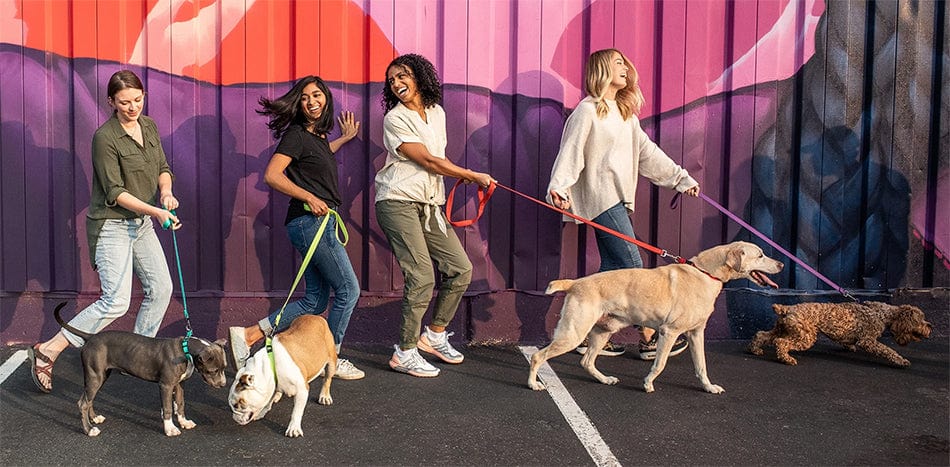Your cart is empty. Let's fix that!


Dogs face anxiety just like us. But because they can’t talk through their anxieties like Family Guy’s Bryan Griffin, it can be difficult to understand (worse than talking with Astro Jetson) what’s going on in their heads − as if Fear from Inside Out is running the show in your doggo’s brain.
There are some obvious signs of doggie anxiety such as constant whimpering or a tucked tail, but that’s just the tip of the … tail. There are other hidden clues that your canine may be suffering, so understanding and knowing the signals will help you help your dog. The important thing to remember is that anxiety is not unique to your dog.
Some of the more subtle signs of dog anxiety can easily be missed for a reason. Trying to uncover these warnings can be like figuring out the Da Vinci Code. So once you get an idea of what to look for, detecting this medical disorder can help save your dog’s life. Here’s what to look for:
We all experience anxiety in certain situations (especially after watching the Scott’s Tots episode of The Office). However, when these key indicators become more prevalent and more regular, it’s a problem. If you think your dog may have some form of anxiety, pack up the car and head to the vet – and try not to freak out Fido even more.
Chances are, Spot doesn’t dislike your mother-in-law quite as much as you do. But that doesn’t justify his “rude” behavior to her when she comes to enjoy a meal at your place. When dogs experience anxiety, they will exhibit problematic behaviors because they potentially are confused. Some may be direct. Some may be indirect.
These actions can help indicate just what kind of situation you have on your hands when it comes to anxiety:
These symptoms can occur when your dog is left alone – queue Eric Carmen’s All By Myself – or can be caused by traumatic experiences such as being abused or maltreated in a previous home. The first step in addressing your dog’s anxiety is identifying it. Talk about any symptoms with your veterinarian or consider consulting a dog behaviorist or trainer.
There are a number of solutions to help you address your dog’s anxiety. Whether it’s separation anxiety or rescue/shelter anxiety, dogs can and will go through a number of emotions that can be difficult for them to process. Here are a few things you can do to help treat your four-legged friend’s anxiety before seeking expert advice if the situation worsens:
You may want to coordinate with a behaviorist or trainer to pinpoint specific triggers that can be avoided in certain situations. Your vet can also help determine if medication is needed and what exactly a plan might look like for your furry boy or girl.
You might lose a few shoes along the way (sorry about that … puppy definitely thought you were gone forever and overreacted a bit), but helping your dog deal with anxiety will benefit him/her AND you in the long run – and not just that mile jog you take on the weekend.